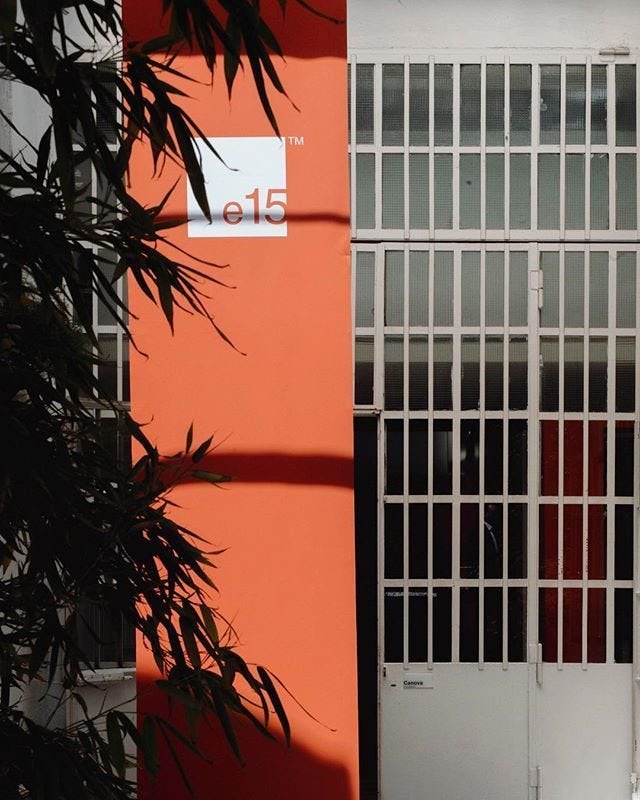Posted in Design Stories
e15 furniture: Authenticity

On the face of things, e15 furniture is a company that doesn’t give much away. In today’s product-heavy, marketing-driven world, many brands exist in a cloud of manufactured hype.
e15 stands back from this mania, recognizing that although this environment can be stimulating, it can also bring us close to exhaustion. Instead, architect Philipp Mainzer and designer, art director Farah Ebrahimi seem intent on operating their joint venture in a design-focused manner that is almost elusive in its sophistication. From paying homage to a circle with a metal table tops to insisting on the perfectly square corners of a solid timber table, their restraint is refreshing, their reservation highly-considered.

Even the company name, e15, feels like a secret code. The combination of a single letter with numbers of hints at an overriding system. But the meaning behind the name is both less complicated and more meaningful than this: ‘e15’ is, quite modestly, the postal code of the company’s first workshop in London.
Like everything e15 touches, what might at first seem to be a typical name conceals layers of meaning. In a simple nod to the workshop, e15 directly recalls the location where people come together and crafting takes place. The specificity of the address feels personal, an invitation into the world where people, materials, ideas, and place collide. As the objects and images we find ourselves surrounded with are increasingly placeless, and globally replicated, this feels more important than ever. And with a simple name, built into the very core of this company is an ever-present reminder of where things come from.
Recognition of the external environment is a theme that e15 carry forward in their methods of design and production, stepping beyond the definitions provided by the postal code. In doing so, they manage to shift the emphasis away from the image of the brand, allowing their products to present themselves and to resonate on their unique terms individually.
Of course, at a certain level e15 still adhere to a prescribed system: it’s just that the system isn’t prescribed arbitrarily by the designers or the media, but fundamentally by the nature of the materials. Each article poses a unique set of rules, tolerances, and limits of manipulation. Seeking to engage with these systems, e15 often chose to focus each project on the qualities of one particular material. Working primarily with solid woods and metals, the detailing is deftly resolved in the same primary substance, or hidden to give a sense of purity.

Their unique, poignant names match the material singularly of the designs: ‘This & That,’ ‘Issac,’ ‘Stop,’ ‘North.’ The moves are punchy, the design responses unapologetic. These are pieces that we instantly recognize, but that also elevate the everyday. And, with their palettes and primary forms, pieces like ‘Bigfoot,’ a generous solid timber table, are at home in a diverse range of environments.
This subtle reminder of where things come from is played out again in the making of new stuff from offcuts that might otherwise be labeled as leftovers and discarded. You might refer to this process as focusing on sustainability, but that makes it seems complicated, like this kind of practice takes effort. Instead, for a holistic practice like e15, there’s a sense of ease to it all.

The most recognizable outcome of this very process is the Backenzahn Stool, whose four tapering solid wood totem legs that, together, make up both the legs and the seat, were shaped from offcuts from the Bigfoot Table. Like Bigfoot, the timber has been carefully incised from the heartwood of the tree, meaning that over time, characteristic cracks will form uniquely to each stool. The top is ever-so-slightly shaped, giving a concave surface for the body to nestle into, while the legs seem to draw in towards each other, but never quite touch. The finely considered negative gap left between them lends a delicacy and lightness to what could otherwise be an overbearingly heavy mass.
e15 explores solidity throughout their furniture collections, at varying scales and levels of refinement. How robustness might provide a defined place for an activity is teased out with the Mo Bed, which offers an elevated plinth for resting. The emphasis on the horizontal plane of the bed is heightened by the use of thick planes, or slabs, of the solid timbers — carefully connected at right angles to reveal the natural grains and tonal variations. Here, the solidity brings a sense of being anchored and of restfulness to the Mo Bed, making it a place we would happily spend a Sunday morning.

e15 is about creating a space to pause, to reflect, and to take delight in these moments quietly. These are furniture pieces and objects that, over time, will take on new postal codes, collaborate with different craftspeople, and define new places. It is the way e15 give their craft over to the search for authenticity resonates deeply with us. And as each step along the way is as valuable as the outcome, e15 celebrate design for what it is — a journey.
